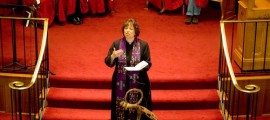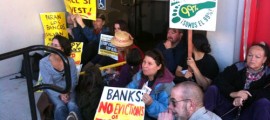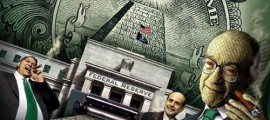Articles Tagged “occupy”
-
OccupySF to “Liberate” Vacant Building
The building location will not be disclosed, organizers say, until OccupySF marchers arrive at the secret location following a 4 pm rally at Union Square. Only a few organizers are aware of the building location, an organizer told Fog City Journal, and stressed the direct action will be non-violent and will not result in property damage.
-
Religious Leaders Show Faith in Occupy Movement
The OWS movement, which protests social and economic inequity and predatory practices that benefit the wealthiest 1 percent at the expense of the rest of society, was kicked off by the Canadian group Adbusters and began in September in the heart of New York City’s financial district. Since then, the movement has been adopted and localized in cities across the nation, some focused on specific issues.
-
Occupy the Capitol: Labor, Students
Unite to Rebalance Education Funding DeficitDozens of people were arrested during Monday’s protest, the culmination of a multi-day march to draw attention to the soaring cost of attending California’s public colleges and universities.
-
Non-Violent Occupy Oakland Protests
Against Police BrutalityFollowing Occupy Oakland’s J28 “Move-in Day” action, which resulted in hundreds of arrests and rampant reports of police brutality and human rights violations against mostly peaceful protesters, there has been a great deal of frustration and tension within the broader movement, Oakland, and the SF Bay Area at large. Occupy Oakland held its’ regularly scheduled weekly march against Police Brutality while many of us were still kettled and/or in transport that night, and a number of us who did not normally attend this action discussed within the walls of Glen Dyer and Santa Rita jails that we could no longer abstain from objecting to the brutality of Oakland’s police force
-
Violent Clashes with Police Mar Occupy Oakland Move-In Day
Before it was over early Sunday, demonstrators had broken into City Hall, pelted police with rocks, and were thrice turned back from establishing a new headquarters. Police responded with tear gas, flash grenades, bean bag bullets and, at times, excessive force. By days end, more than 300 people were arrested. Several injuries were reported, involving both police and protesters.
-
SF Occupy Protesters Target Bank of America
Over Foreclosure CrisisAbout 100 demonstrators blocked access to a Bank of America branch in the Excelsior District to call attention to unfair lending practices.
-
Pulling Back the Curtain on the Wall Street Money Machine
The Fed, it seems, was doing only what banks and the money market do for each other every day: making “liquidity” available at very low interest rates. In 2008, bank liquidity dried up after Lehman Brothers collapsed, and the banks could not get the cheap, ready credit on which their lending scheme depends. The Fed then stepped in as “lender of last resort,” doing what it had to do to keep the banking scheme going.






 The Hunger Site
The Hunger Site
Recent Comments